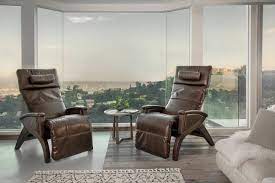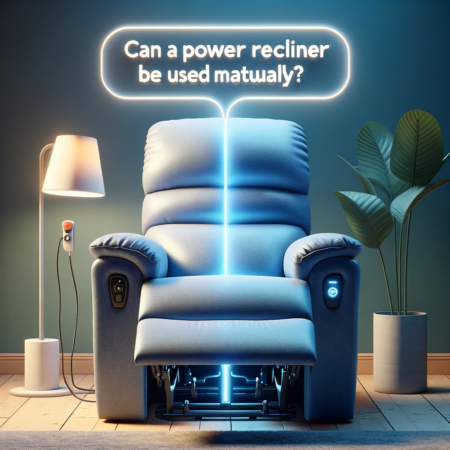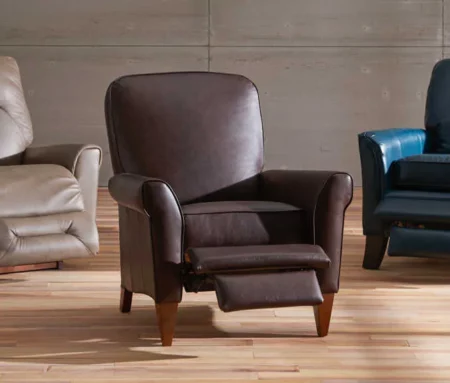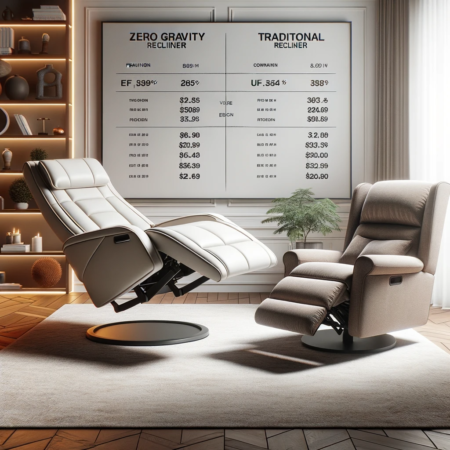To stop your recliner from squeaking, here’s what you can do:
First, find where the noise is coming from by moving the chair a bit.
Then, make sure all the screws and bolts are tight. Put some special oil on the moving parts like hinges and springs.
Stick soft pads between any metal parts that touch.
If it’s made of wood, put a bit of cloth or paper in between the joints.
If the noise doesn’t go away, you might need a pro to fix or change some parts to make your recliner quiet again. Here in this article, we’re going to explore all the solutions in detail.
Why Is My Recliner Squeaking?
Before we explore the solutions, let’s understand the underlying reasons for the recliner squeaking. Here are the four most common culprits:
- Worn-out or Dry Bearings: Over time, the moving parts of your recliner, such as the bearings, may wear out or become dry, resulting in friction and squeaking.
- Loose Bolts or Screws: Regular use of your recliner can cause the bolts or screws to become loose, leading to unnecessary movement and noise.
- Wood Friction: If your recliner has wooden components, the friction between them can generate squeaking sounds.
- Spring Issues: Faulty or worn-out springs can contribute to the squeaking problem, especially when they rub against other components.
Also Read
How to Stop a Recliner from Squeaking? 11 Easy Ways
Now that we’ve identified the main causes of recliner squeaking, let’s explore the eleven easy ways to put an end to this annoyance and bring back the silence.
1. Apply a Lubricant to the Moving Parts
One effective method to silence your squeaky recliner is by applying lubricant to the moving parts.
This helps reduce friction and allows for smooth operation. When choosing a lubricant, opt for silicone-based or white lithium grease for optimal results.
Follow these steps to apply the lubricant:
- Locate the moving parts of your recliner, such as hinges, pivots, and joints.
- Clean any dirt or debris from these parts using a soft cloth or brush.
- Apply a small amount of lubricant to each moving part.
- Gently work the lubricant into the mechanisms by moving the recliner back and forth a few times.
2. Tighten Any Loose Bolts or Screws
Loose bolts or screws can cause excessive movement, leading to squeaking sounds.

To tackle this issue, follow these steps:
- Inspect your recliner for any loose bolts or screws.
- Using a suitable screwdriver or wrench, tighten any loose fasteners.
- Be careful not to overtighten, as this can damage the components. Just ensure they are snug and secure.
3. Apply Wax to the Wood
If your recliner has wooden components that contribute to the squeaking noise, applying wax can provide a practical solution.
Here’s how to do it:
- Clean the wooden parts using a soft cloth or mild cleaning solution.
- Apply a thin layer of furniture wax or beeswax to the affected areas.
- Use a clean cloth to buff the wax, creating a protective barrier and reducing friction.
4. Use a Dry Lubricant
Dry lubricants like talcum powder or cornstarch can work wonders in eliminating squeaking sounds. Follow these steps:
- Identify the areas where the noise originates from.
- Sprinkle a small amount of talcum powder or cornstarch directly onto those areas.
- Rub it in gently with your fingers or a soft cloth to ensure even distribution.
- Test the recliner’s movement to see if the noise has diminished. Reapply if necessary.
5. Apply a Rubber Bumper to the Metal Parts
To reduce metal-to-metal contact and prevent squeaking, applying rubber bumpers can be highly effective. Here’s how:
- Identify the metal parts that come into contact and produce noise.
- Purchase self-adhesive rubber bumpers or pads from a hardware store.
- Peel off the backing and firmly press the bumpers onto the problem areas.
6. Add a Layer of Felt or Foam to the Moving Parts
Adding a layer of felt or foam to the moving parts can significantly reduce friction and eliminate squeaking. Follow these steps:
- Cut small pieces of felt or foam material to fit the affected areas.
- Attach the material to the moving parts using adhesive or double-sided tape.
- Ensure the felt or foam provides a cushioning effect between the components.
7. Replace the Springs
If you’ve tried the previous methods and the squeaking persists, it might be time to replace the springs.

Here’s how to do that:
- Identify the springs that are causing the noise.
- Consult your recliner’s user manual or contact the manufacturer for specific instructions on spring replacement.
- Obtain the necessary replacement springs and carefully install them according to the manufacturer’s guidelines.
8. Repair or Replace the Recliner Mechanism
In some cases, the squeaking may originate from the recliner’s mechanism. Here’s how you can address this issue:
- Identify the faulty or damaged parts of the recliner mechanism.
- Depending on the severity of the problem, you can either repair the faulty components by following the manufacturer’s instructions or opt for a complete recliner mechanism replacement.
9. Reupholster the Chair
If all else fails and the squeaking persists, reupholstering the chair can be a viable solution.
This involves replacing the fabric covering and padding to eliminate any sources of friction and noise. Consider seeking professional assistance or consulting upholstery guides for a successful re-upholstering process.
10. Use a Noise-Canceling Blanket
If you find it challenging to address the squeaking noise directly, using a noise-canceling blanket can provide a temporary solution.
These blankets are designed to absorb and muffle sounds, providing a more peaceful reclining experience.
Simply drape the blanket over your recliner, ensuring it covers the entire chair.
11. Move the Chair to a Different Location
Sometimes, the environment plays a role in amplifying the squeaking sounds.
If you’ve exhausted all other options, consider moving your recliner to a different location within your home.
Experiment with different placements until you find a spot that minimizes the noise.
Troubleshooting Tips
While the above methods are highly effective in eliminating recliner squeaking, here are five troubleshooting tips to consider if you encounter any challenges along the way:
- Double-Check Your Work: After applying any solution, test the recliner’s movement and listen for any remaining squeaking. If necessary, revisit the previous steps to ensure everything is properly implemented.
- Seek Professional Help: If you feel uncomfortable performing any repairs or replacements, it’s best to consult a professional recliner technician or upholstery expert who can guide you through the process.
- Regular Maintenance: To prevent future squeaking, incorporate regular maintenance into your recliner care routine. Clean the moving parts, lubricate as needed, and tighten bolts and screws periodically.
- Consider The Age And Condition Of Your Recliner: If your recliner is quite old or heavily damaged, it may be challenging to completely eliminate all sources of squeaking. In such cases, it might be worth considering investing in a new recliner for optimal comfort.
- Patience Is Key: Solving a squeaking issue may require a trial-and-error approach. Be patient and persistent in your efforts, as the silence and comfort of your recliner are well worth it.
Conclusion
By following the 11 easy ways to stop a recliner from squeaking, you can restore peace and tranquility to your cherished chair.
From lubricating moving parts to tightening loose bolts, each method offers a practical solution for eliminating the annoying noise.
Remember, regular maintenance and care are essential for the long-term enjoyment of your recliner. So, bid farewell to the irritating squeaks and recline in blissful silence!
Frequently Asked Questions
How Do You Quiet a Noisy Recliner?
To quiet a noisy recliner, you can try various methods. Applying a lubricant to the moving parts, tightening loose bolts or screws, and using a dry lubricant like talcum powder or cornstarch are effective solutions.
Additionally, adding rubber bumpers, felt or foam padding, and even replacing worn-out springs or the recliner mechanism can eliminate the noise.
What Is the Best Lubricant for a Recliner Chair?
The best lubricant for a recliner chair is silicone-based or white lithium grease. These lubricants offer excellent lubrication properties, reduce friction, and provide long-lasting results.
Do Recliners Need to Be Oiled?
Yes, recliners can benefit from periodic oiling or lubrication.
Over time, the moving parts of a recliner may experience wear or dryness, leading to squeaking sounds. Applying an appropriate lubricant to these parts helps reduce friction, maintain smooth operation, and prevent squeaks.
Regular maintenance and lubrication can extend the lifespan of your recliner and enhance your overall comfort.




